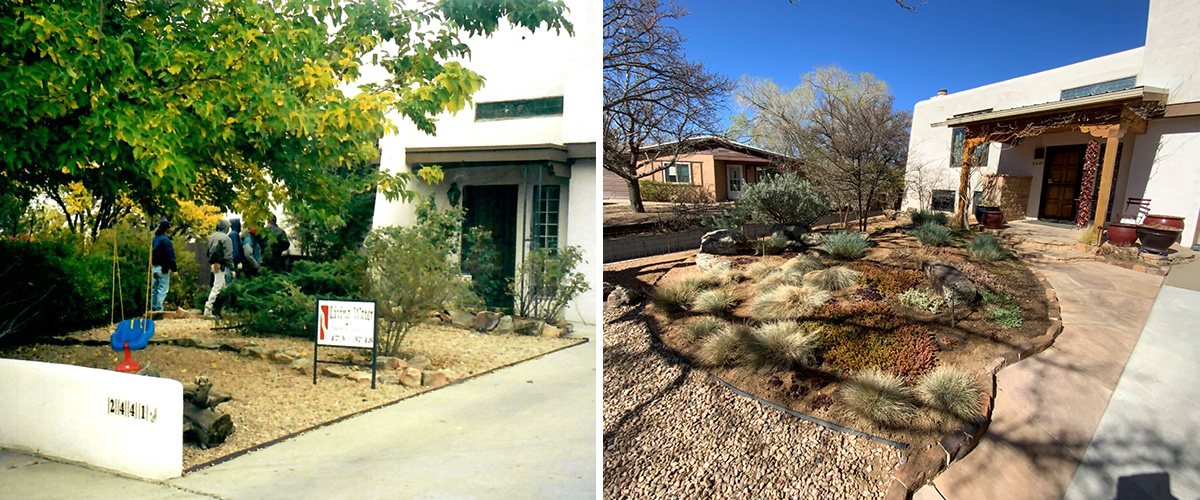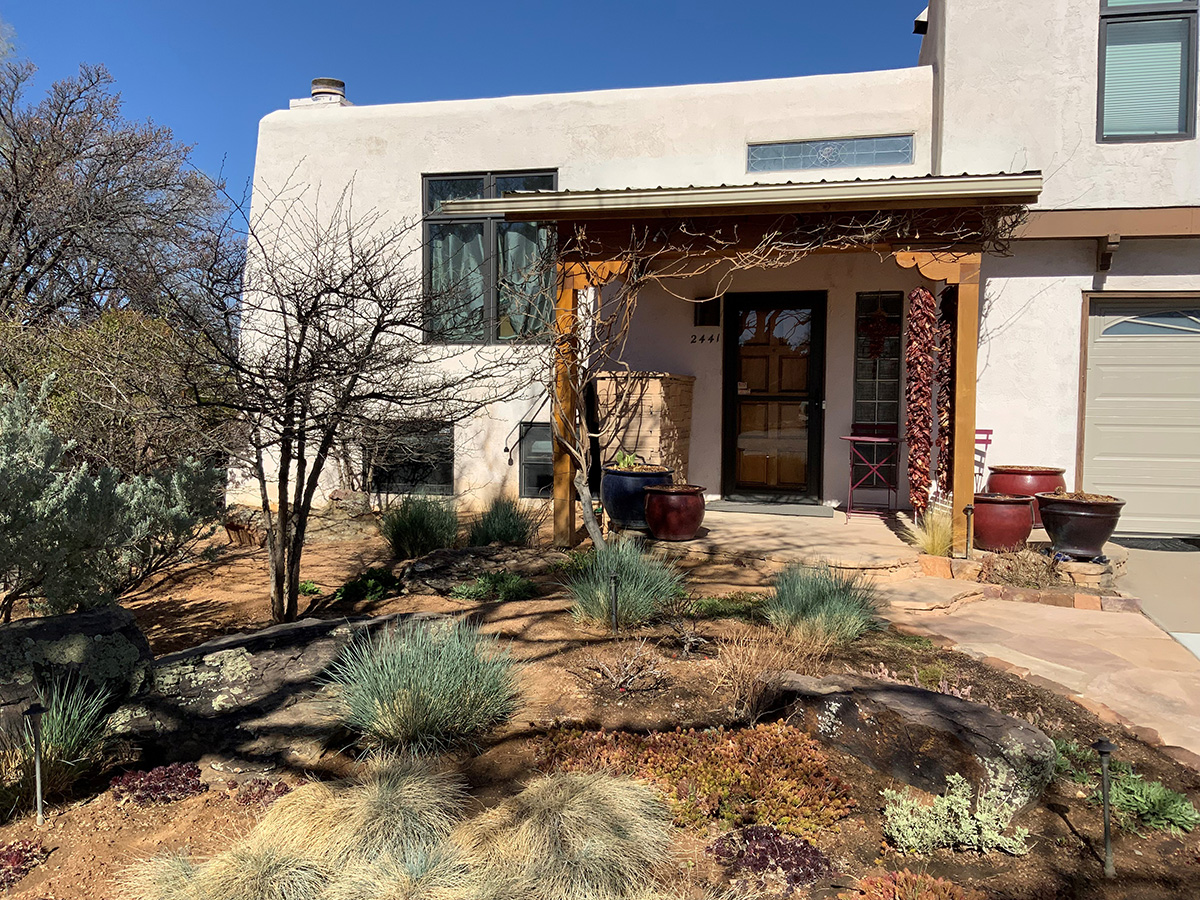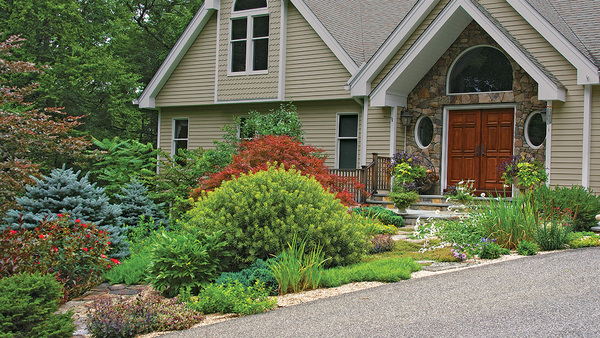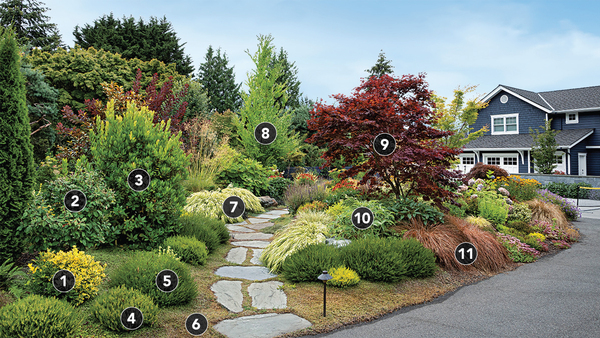
When you pull into your driveway or walk up to your front door, ask yourself a few questions: Are you wowed? Do you smile? Are you impressed? Are you soothed by the flow, continuity, and connectivity of the space? If the aesthetics don’t meet your approval, what’s missing? What’s out of place? The sight by which you’re greeted when you arrive at a new home sets the stage for how you will feel about the design of the whole property. The front of the property is a space that’s meant to welcome you in. Your senses will either be put at ease or be set on edge.
Start with a few key garden design principles: Form, flow, and function
Form, flow, and function are the building blocks for curb appeal and can help soothe a first-time visitor or an old friend. Each person’s aesthetics and sensibilities are as varied as every individual human, but these three principles should always be guiding the design.
Form
Form is the skeleton of any design and is defined by the structures, walls, fences, borders, and driveways that lead into the most visible area of your property. Hardscape is a major element of form. Stone paths, stone terraces, accent boulders, flagstone walkways, or other types of pavers such as brick or tile are all components of form. The underlying structure of your space will help you in making the rest of the design come together. Start editing your space to your preferences. Add stone edging, remove lawn, or add a courtyard wall or fence. Keep in mind that seeing something intriguing on someone else’s property doesn’t always mean you should attempt replicating that aesthetic on your own. Trying to force an element into a space in which it doesn’t belong is much harder to correct than removing something and starting anew. Instead, do what feels right for your space, and seek out a landscape architect if you’re stumped. In making changes your changes, be brutally honest about what works and what doesn’t.
Flow
After getting the form of your space down, move on to flow. How does the hardscape inform the planting design and style, and vice versa? What colors do you want to highlight or accent? Planting design is a huge component of flow, and sometimes less is more. A busy space with tons of plant colors or textures can overwhelm your senses instead of soothing them. You also need to keep maintenance in mind. How much time do you have in your day-to-day life to keep up with the plants and design you choose? If you don’t have the time to maintain it, the original design will fall short in time and no longer feel right for the space.
Function
This part of the design process has the potential to be simple. Where is the front gate? Where is the front door? In the Southwest, there are so many properties I visit where I don’t even know where to go to find the front door. Another aspect of function are areas used to enjoy and live in the space, such as a bench, swing, or sitting area. Think about how you want to enjoy your property after a long day of work by talking with a loved one, reading a book, or sipping a cup of coffee or tea.

A transformed front yard decades in the making
My work on the front yard of my Santa Fe home is constant; it has been changing for twenty years, and every year I seem to change something new. Above is a “before” picture taken several years ago and an “after” picture of what it looks like right now.
Currently in my front yard you can see form represented with moss rock edging that defines areas outlined by crusher fines and gravel. Flagstone with polymeric sand invites you to the front door. Plant containers that usually hold annuals help anchor the front porch. An Anasazi-styled short wall defines the front door entrance and is functional as a place to put things in passing. Boulders add year-round interest to the front yard while most of my perennials are hibernating. Flow is represented by plants that complement the hardscaping, including wisteria vines (Wisteria cv., Zones 4–9), which soften the portal roof and wood beams of the front porch, and grasses, which soften the boulders in the front yard. Red chile ristras hang in the corner of the portal as a textural and colorful accent to the otherwise earthy color palette. A small table and chairs make this space functional as a space to sit and talk and enjoy the front yard.

I hope to have described a few basics that will inspire you to begin your front yard’s transformation. Start small, start slow, and be patient. The Southwest offers tons of different cultural styles and settings in which to see front yards blossom. For more on creating curb appeal, check out:
And for more Southwest regional reports, click here.
—Mark Brotton, APLD, owns and operates Living Water, Irrigation, and Landscape based in Santa Fe, New Mexico.
Fine Gardening Recommended Products

A.M. Leonard Deluxe Soil Knife & Leather Sheath Combo
Fine Gardening receives a commission for items purchased through links on this site, including Amazon Associates and other affiliate advertising programs.

Corona E-Grip Trowel
Fine Gardening receives a commission for items purchased through links on this site, including Amazon Associates and other affiliate advertising programs.

SHOWA Atlas 370B Nitrile Palm Coating Gloves, Black, Medium (Pack of 12 Pairs)
Fine Gardening receives a commission for items purchased through links on this site, including Amazon Associates and other affiliate advertising programs.



















Comments
Log in or create an account to post a comment.
Sign up Log in